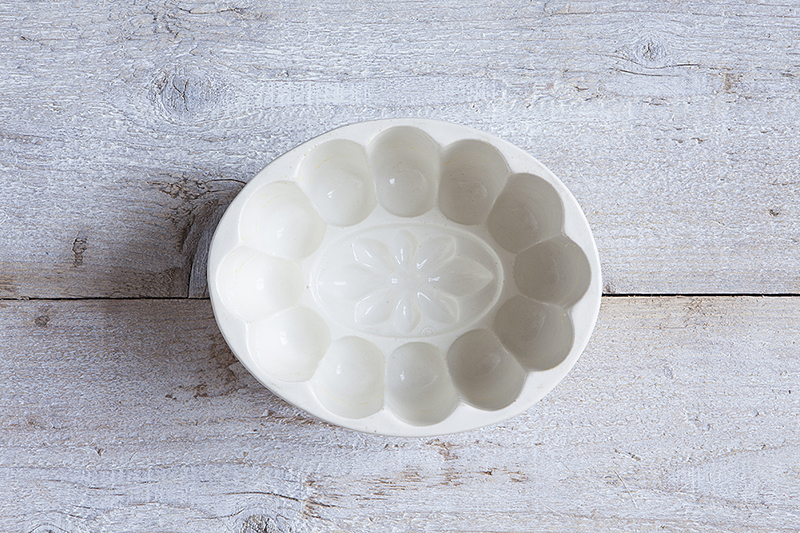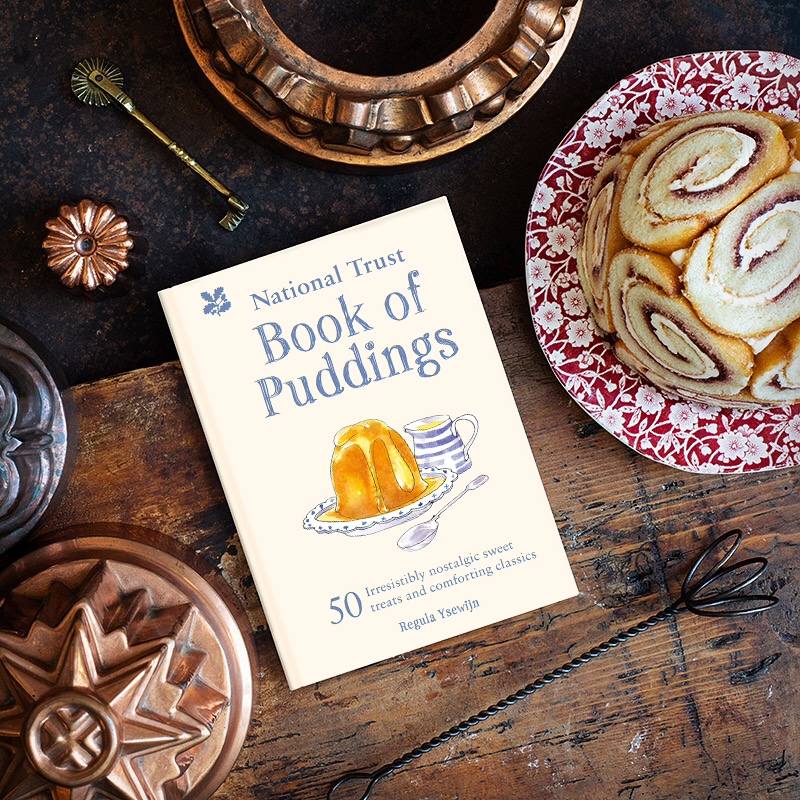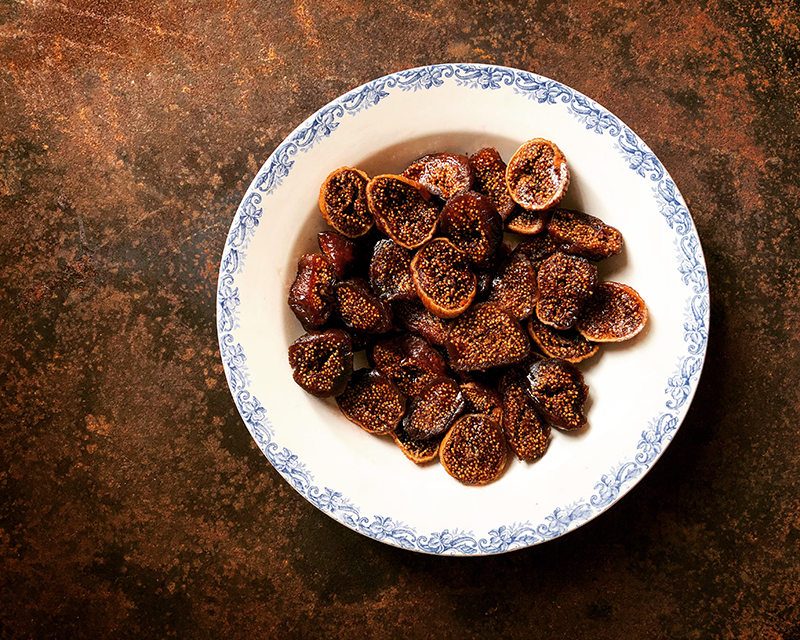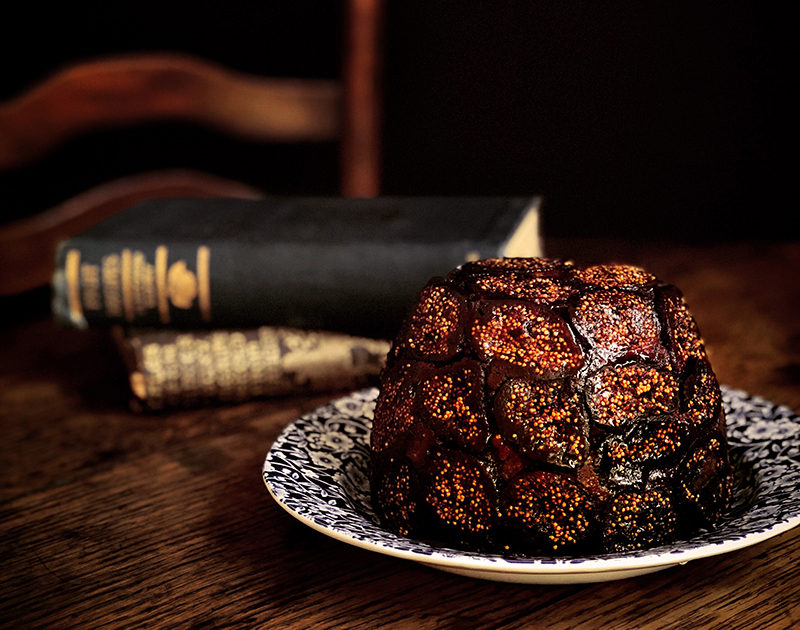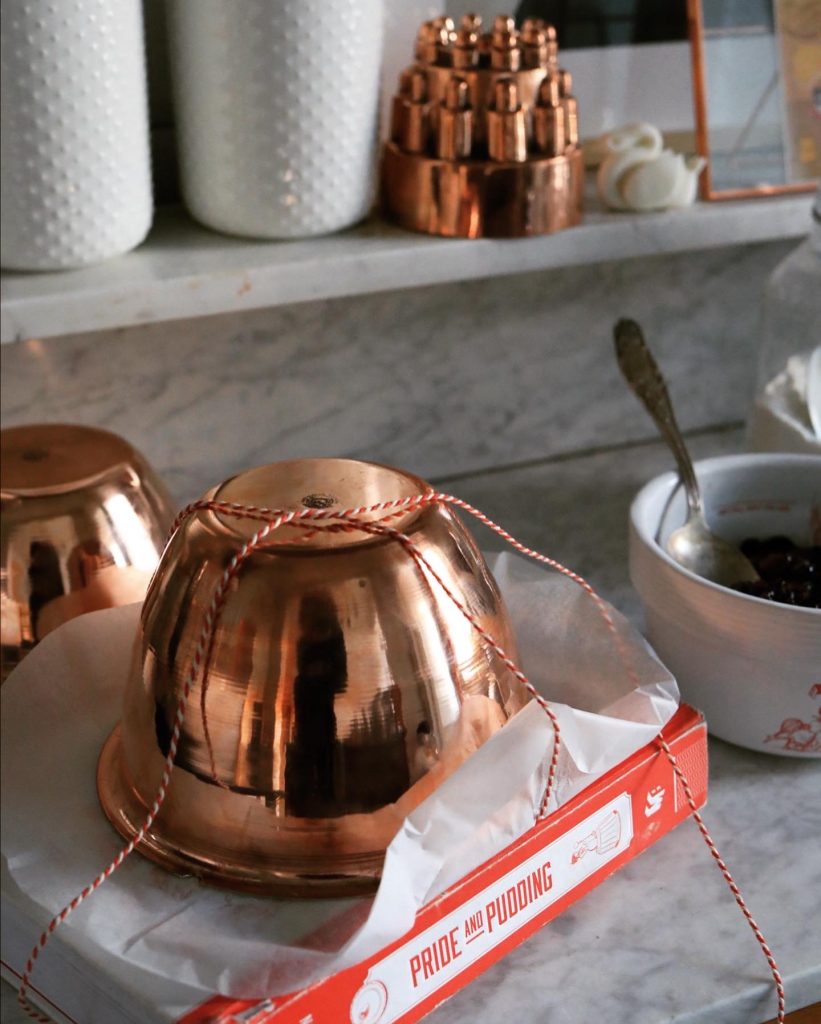The post Brighton Rock Cakes – from Oats in the North, my new book appeared first on Miss Foodwise.
]]> Recipe and extract from Oats in the North, Wheat from the South, published with Murdoch Books and available here >
Recipe and extract from Oats in the North, Wheat from the South, published with Murdoch Books and available here >
Usually these buns appear as ‘Rock cakes’ or ‘Rock buns’ in old cookery books, but in 1854 two recipes for Brighton rock cakes appeared in George Read’s The Complete Biscuit and Gingerbread Baker’s Assistant. Read gives a recipe for Brighton rock cakes and another for Brighton pavillions. The latter are made the same way as Brighton rock cakes, but are finished with a topping of currants and coarse sugar that, he says, should be ‘as large as a pea’.
You can still buy Brighton rock cakes in the seaside town of Brighton at the Pavilion Gardens Café. The open-air kiosk at Brighton Pavilion has been selling Brighton rock cakes since 1940, and possibly even longer if we look at Read’s recipe from 1854. Rock cakes are popular throughout Great Britain and Northern Ireland, and often appear in literature. In Harry Potter and the Philosopher’s Stone, Hagrid serves them to Harry and Ron, and Agatha Christie also mentions them in more than one novel.
I wanted to share this recipe in publication week of my new book Oats in the North, Wheat from the South because currently I am missing the sunny Brighton beach, the buzzing pier, and the busy Brighton lanes with its independent shop walhalla. I miss the days without worry when we drove over to the UK for a weekend, antiquing, walking, eating… When the Corona crisis is over I’m planning a trip, but I wonder how we will feel post Corona, will we be free of worry or will the way we live change?
But for now, we can bake, do join my #bakecorona on social media.
This recipe only uses one egg, in a time when eggs are dear this recipe might be a solution, other recipes from the book which can be handy during shortages are the Soda bread – to save yeast, the Parkin – to save sugar, the Cornish Heavy cake NO eggs at all, Yorkshire parkin – just oat flour needed, the fat rascalls – just 1 egg needed, Swiss roll – no baking powder but lots of eggs, Flapjack – uses just oats or leftover muesli. And to save an egg, I use an egg less in my pound cake! Happy baking…
This recipe for Brighton rock cakes contains candied cedro, but most rock cakes only contain currants, so you can easily leave it out.
Recipe from Oats in the North, Wheat from the South, published with Murdoch Books and available here >
For 6 rock cakes
- 225 g plain (all-purpose) flour
- 100 g raw cane (demerara) sugar or white sugar
- 1 tsp baking powder
- 1/4 tbsp mixed spice
- pinch of sea salt
- 75 g chilled butter, diced
- 1 egg
- 3 tbsp full-fat milk
- 50 g currants
- 30 g candied cedro (optional)
- 3 glacé cherries, halved, to garnish (optional)
- nibbed sugar, to garnish (optional)
Method
Preheat your oven to 200°C (400°F) and line a baking tray with baking paper.
Mix the flour, sugar, baking powder, mixed spice and salt in a large bowl. Add the butter and rub it into the flour mixture until it has the consistency of breadcrumbs.
Stir in the egg, then add enough milk to bring the dough together without making it too wet. If the dough is too dry to press together, add a teaspoon of milk. Fold the currants and candied cedro through the dough. Form six rock cakes using two forks – this will help achieve a rugged, rocky look. Place on the baking tray and decorate with the cherries and sugar, if using. Bake in the middle of the oven for 15 minutes until the rock cakes have a golden blush.
The post Brighton Rock Cakes – from Oats in the North, my new book appeared first on Miss Foodwise.
]]>The post Jaune Mange appeared first on Miss Foodwise.
]]>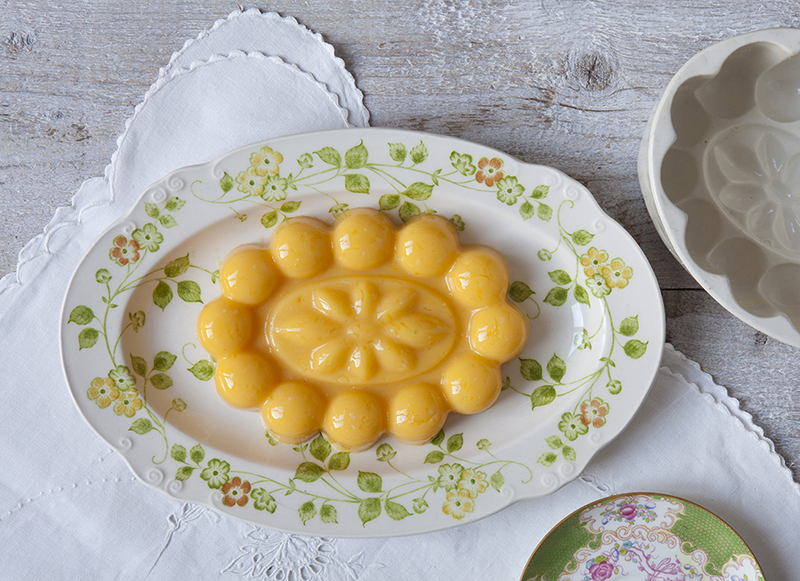 Jaune Mange jelly is the yellow sister to the ancient delicacy called Blanc Mange which means ‘white food’. It is one of the most international early dishes of European cuisine. From the Middle Ages onwards the name of this dish in its various forms – blanc mange, blanc manger, blamange, manjar branco, biancomangiare – can be found in most European cookery books.
Jaune Mange jelly is the yellow sister to the ancient delicacy called Blanc Mange which means ‘white food’. It is one of the most international early dishes of European cuisine. From the Middle Ages onwards the name of this dish in its various forms – blanc mange, blanc manger, blamange, manjar branco, biancomangiare – can be found in most European cookery books.
It is believed by many food historians that the earliest recipe for blancmange dates back to the twelfth century. Two recipes for blancmange also feature in the earliest English cookery text, The Forme of Cury from C1390. By 1395, two recipes for blancmange can be found in the Viandier manuscripts, the first French cookbook: one is a dish for the sick, the other is a multicoloured dish, which is at odds with the name’s literal meaning.
This recipe uses seville orange juice, while others recommend lemon and lemon peel for flavour and colour. Later recipes by J.H. Walsh in The British Cookery Book (1864) instruct the cook to use sherry or ‘raisin-wine’. Because the eggs give this jaune mange a set already, you don’t need to use as much gelatine as you would for a blancmange.`
Jaune Mange
Boil one ounce of isinglass three quarters of a pint of water, till melted, strain it; add the juice of two Seville oranges, a quarter of a pint of white wine, the yolks of four eggs, beaten and strained, sugar to the taste; stir it over a gentle fire till it just boils up; when cold put it into a mould or moulds; if there should be any sediment, take care not to pour it in.
Charlotte Mason, The Lady’s Assistant, 1773
Makes enough for a fancy 400 ml (14 fl oz) mould
What do you need
- 220 ml (7. fl oz) white wine
- 1 teaspoon sugar
- 3 egg yolks
- 4 gelatine leaves
- juice of 2 seville oranges (or plain oranges, it will just be more sweet but not too sweet, don’t worry)
Method
In a small saucepan, bring the wine and sugar to a simmer. In a separate bowl, whisk the egg yolks. Soak the gelatine leaves in the orange juice until soft.
Begin whisking the warm wine mixture into the egg yolks, followed by the soaked gelatine and juice.
Allow to cool but not set, then pour into a mould that you have rinsed and not wiped dry and allow to set for 6 hours or overnight. The smaller the mould, the shorter the setting time.
To unmould, wet one of your hands and use it to loosen the jelly. Allow the jelly to slide out onto a wet plate (if the plate is wet, you can easily move the jelly around if necessary).
From my book ‘Pride and Pudding – the history of British puddings, savoury and sweet’ (Murdoch Books)
Happy new year!
The post Jaune Mange appeared first on Miss Foodwise.
]]>The post Figgy Pudding for my ‘National Trust Book of Puddings’ appeared first on Miss Foodwise.
]]>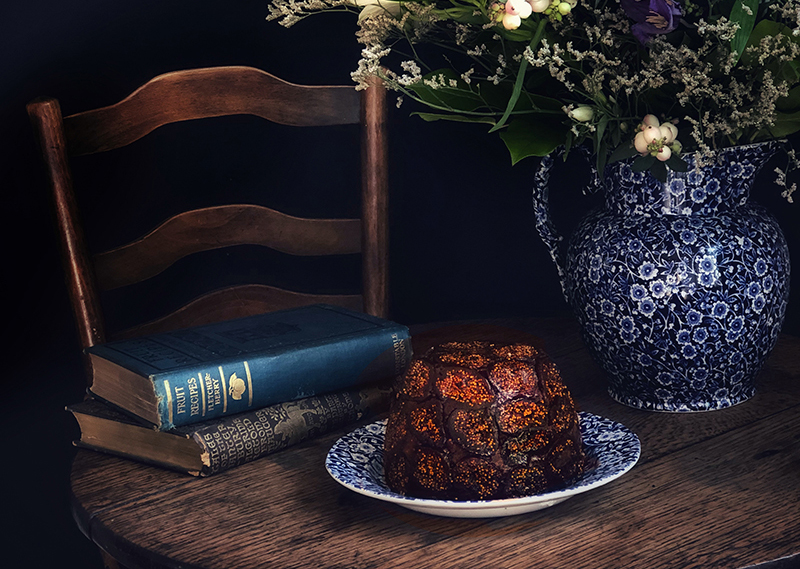
Today is Stir-up sunday and the most important day on the pudding calendar. Today is the day to prepare the Christmas pudding, or plum pudding. Why this should be done a month before Christmas is something I’ve written about in a previous posting here and in my book Pride and Pudding. But this year I wanted to give you an alternative to the traditional plum pud.
A figgy pudding is just another name for a plum pudding – and both of them generally refer to puddings made with raisins or currants and no figs at all. However there have been recipes for figgy pudding in the late 19th century, but those recipes did refer to puddings made with figs and didn’t give a recipe for plum pudding. Using dried figs, this results in a dark and luxurious winter pudding. Why not have this as your pudding on Christmas day for a change this year?
This is a recipe from my little book the ‘National Trust Book Of Puddings‘ which was published in april (2019).
Maybe you have noticed on instagram or you have spotted one of my previous post about the copper pudding basin I developed with the people from Netherton Foundry? It creates a perfect pudding because copper holds the heat much better than ceramics do. It is a pudding basin for life, and one to pass on to your sons and daughters, because this is seriously durable and also incredibly pretty. To find out more about the copper pudding pot, go over to Netherton Foundry’s website here.
Figgy Pudding – from my book ‘The National Trust Book of Puddings’
- 400g dried figs
- 3 tablespoons golden syrup
- 120ml red wine
- 20ml Cointreau
- 60g currants
For the pudding
- 110g plain flour
- 60g shredded suet
- 120g brown sugar
- 60g fresh breadcrumbs
- 1 teaspoon baking powder
- 1/2 teaspoon ground nutmeg
- 1 teaspoon mixed spice
- Pinch of salt
- 2 eggs
- 75ml stout or porter beer
Method
Start the day before you want to make the pudding. Put the figs and golden syrup into a saucepan with the red wine and Cointreau and bring to a simmer for about 5 minutes, stirring to immerse the figs in the liquid. When the figs have softened, remove them and set aside while simmering the liquid until it becomes syrupy. Cut any tough stems off the figs, then halve the figs and put them in the syrup to soak overnight. Soak the currants separately in a little water. It is also best to mix the pudding a day or a few hours in advance. Mix together all the dry ingredients in a large bowl, then add the eggs, currants and stout and mix well by gently stirring with a wooden spoon.
Prepare a 1.1-litre pudding basin for steaming and preheat the oven to 160C. See how to prep a pudding basin on this post about Christmas pudding here >
Arrange the halved figs all around the basin. Chop any leftover figs and fold them into the pudding mixture then spoon the mixture into the basin, cover and steam in the oven for 3 hours.
When done, turn the pudding out on to a plate. Warm any leftover syrup and drizzle over the pudding. Slice and serve with custard or clotted cream.
The post Figgy Pudding for my ‘National Trust Book of Puddings’ appeared first on Miss Foodwise.
]]>
